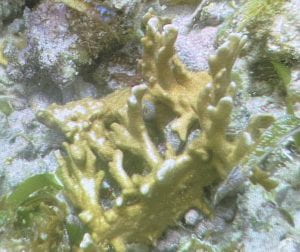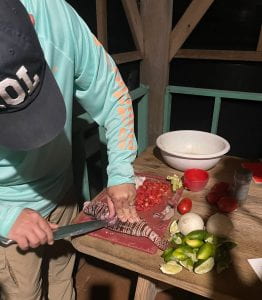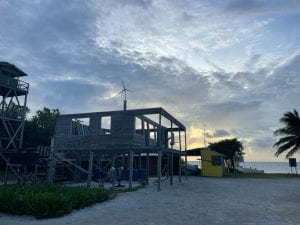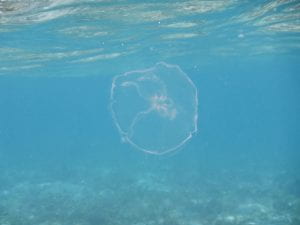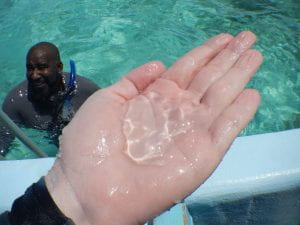Today we got together in the wet lab and went through all of our findings from the parrotfish study yesterday. On the striped parrotfish, we found that they usually swim in large, informal groups that re-convene at the edge of the coral or in the sea grass. We mostly observed juveniles, although there was at least one male spotted in both of our groups. On average, it was around 5-6 fish that we would see swimming together. Usually the fish were eating algae off of grass, but sometimes they would also eat off of coral.
When all of the parrotfish groups got together, we found that all of the species had been eating algae, and only a few of them would appear to actually be eating pebbles or the seagrass itself. Also, all of the species primarily lived near reef edges.
Later on, we went out into the shallow waters to try and collect any creatures we could catch and birng them back to the wet lab to analyze. I was really impressed with how some TFBs could just snatch them right out of the water. I successfully caught a fish too! I’m not even sure how I did it, it practically just swam right into my tray. The creepiest catch was definitely the box jellyfish Elise caught near the mangroves. Apparently it was just hanging out near her leg! I don’t think the box jellies here are nearly as dangerous as the Australian ones, but it was still horrifying to hear that we were just standing that close to them the whole time.
In the water I also saw a lot more needlefish! They were super fast and too smart to get caught in our meagre trays and buckets, but I observed them swimming near the surface in groups of 3-4 and darting around, presumably catching smaller fish just like us.
For our poster on the parrotfish today, I took the job of illustrating our observations-the fish! It was really cool to put them on the paper and try to match each of their unique colors to the reference pictures we had.
This afternoon, we went on a walk around the island and spent a good amount of time in the coral graveyard. It was fascinating to observe the gradient of color, starting with the living coral in the sea, and finally progressing to the grey, dead coral that had been fossilized and is now fully exposed on the shore. We also picked up many little creatures that lived in the shallow waters along the coast.
I gave my presentation on piscivorous fish tonight, and we learned about sharks and rays in addition to angelfish. Angelfish also practice protogynous hermaphroditism, which I really did not know about before this trip, but seems to be quite common among the reef fish.
Tonight, instead of going for a night snorkel due to precarious wind conditions, we fished off of the dock! The highlight BY FAR was Claire D catching a squid! It was absolutely unbelievable-she somehow captured the (not so) little guy on the first try in a tiny net and successfully transferred it to one of the buckets we had set up. Once in the bucket, the squid inked! In addition to the squid, we also collected fish, shrimp, and a glass eel! It was one of, if not the most, memorable nights of the trip thus far.

-Emily





































